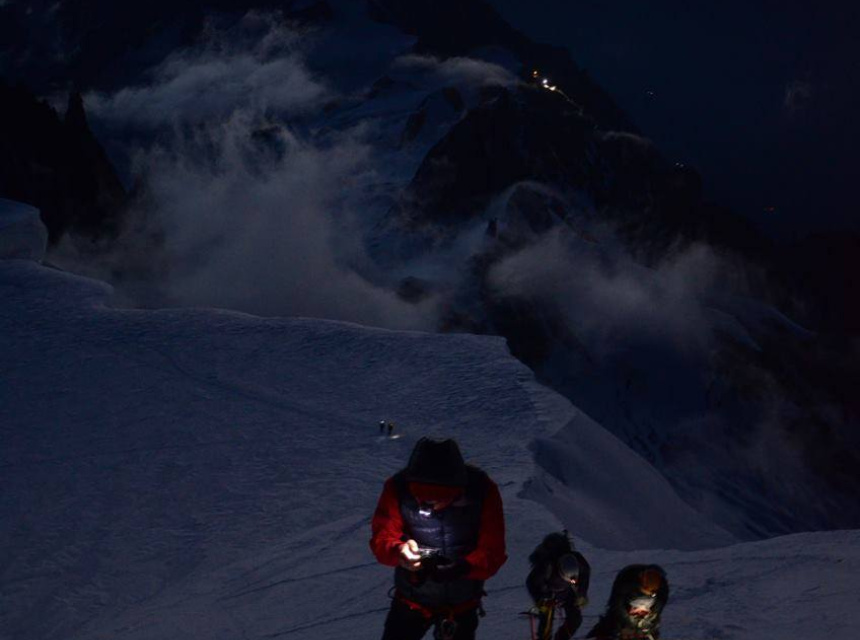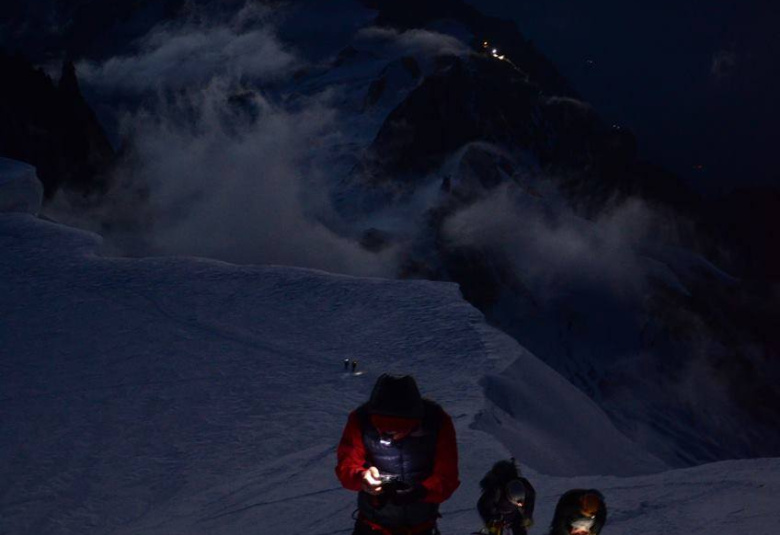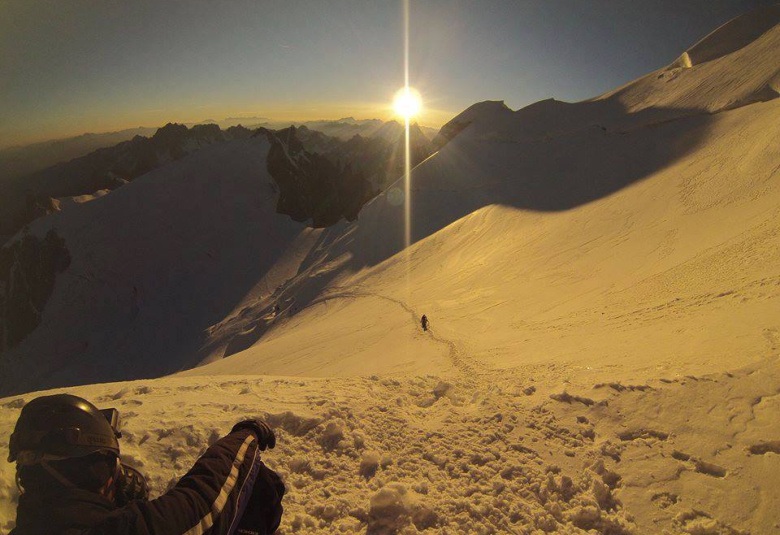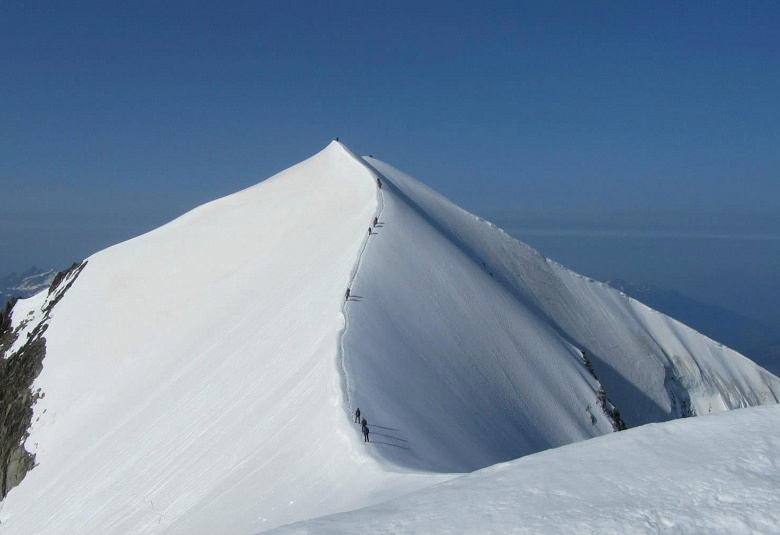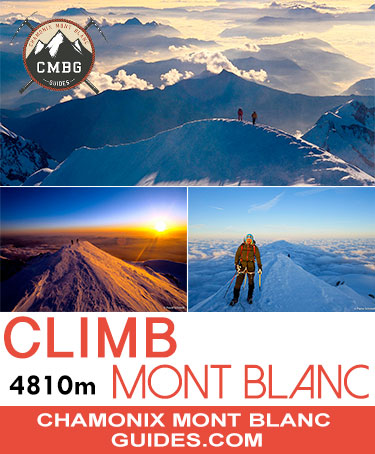The descent is much more dangerous than the ascent in any summit attempt and Mont-Blanc makes no exception. In reaching the summit, a High Mountain Guide will advise the client: "Congratulations, but the job is only half done. We now have the second half ahead of us, the descent."
Descent is more dangerous because:
- The direction of travel is down, so every slip may initiate a fall;
- The fatigue: people become more tired the longer an activity progresses;
- The exhilaration of reaching the summit may distract a climber from the dangers of the descent;
- The belief that reaching the summit is the completion of a successful climb. It is not, the success comes when the climb down is completed and the climber is safe and sound;
- Avoiding falling ice and rocks is never easy, but when a climber is not facing up the mountain and does not have the chance to look up and see descending objects, the risk of begin struck is even greater.
Mont-Blanc has a high fatality rate, maybe more than any other mountain in Europe. Being the tallest in western Europe, it represents an attraction for climbers all over the world. Every year there are thousands of amateurs and climbers with little mountaineering experience that tackle the climb, due to the fact that the mountain is not considered to be particularly difficult to climb from a technical point of view.

